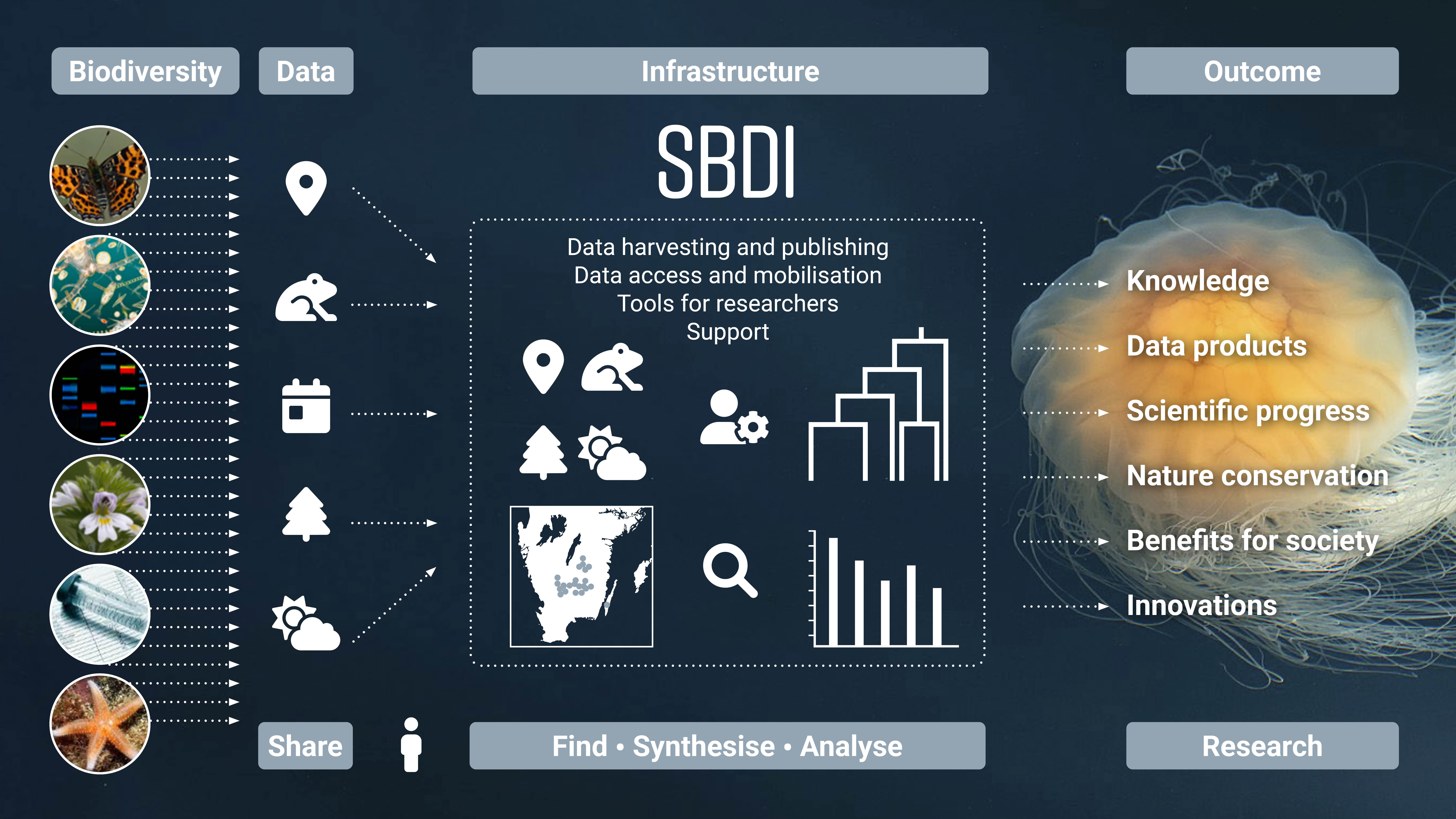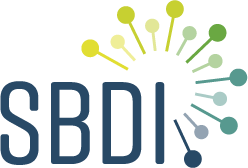SBDI
SBDI – Swedish Biodiversity Data Infrastructure – is the result of a decades-long process of developing, merging and consolidating Swedish e-infrastructure for biodiversity and ecosystems research. Partly, the process has been inspired by the need to collaborate in building increasingly sophisticated infrastructure. Partly, it has been driven by the increasing importance of the infrastructure in supporting cutting-edge research. The establishment of SBDI in 2021 represents a major achievement in creating a powerful national platform for innovative, interdisciplinary research on biodiversity and ecosystems.
SBDI is a nationwide undertaking, with contributions from eleven organizations across Sweden: Swedish Museum of Natural History (NRM; host organization), Swedish University of Agricultural Sciences (SLU), Karolinska Institute (KI), Linnaeus University (LnU), Lund University (LU), Royal Institute of Technology (KTH), Stockholm University (SU), Swedish Meteorological and Hydrological Institute (SMHI), Umeå University (UmU), University of Gothenburg (GU) and Uppsala University (UU). The consortium covers the entire range of biodiversity data sources represented in the Swedish research community.
The technical platform is developed and maintained through international collaboration within the GBIF and Living Atlases (LA) communities. SBDI is a key partner in both. The Swedish LA instance, the Bioatlas, includes several SBDI contributions in various stages of integration into the core development effort, and a set of unique extensions for analysis of Swedish ecosystems. It is one of the most advanced and powerful systems for data-driven biodiversity and ecosystem analyses in the world. The LA-GBIF collaboration allows SBDI to deliver a considerably more advanced infrastructure than would otherwise have been possible given the limited resources.

SBDI includes tools for mobilizing and working with a wide range of biodiversity data. The figure shows examples of data types and data mobilization tools, as well as examples of web-based graphical front ends and software wrappers relying on SBDI APIs to provide data access, analysis and visualization capabilities.




